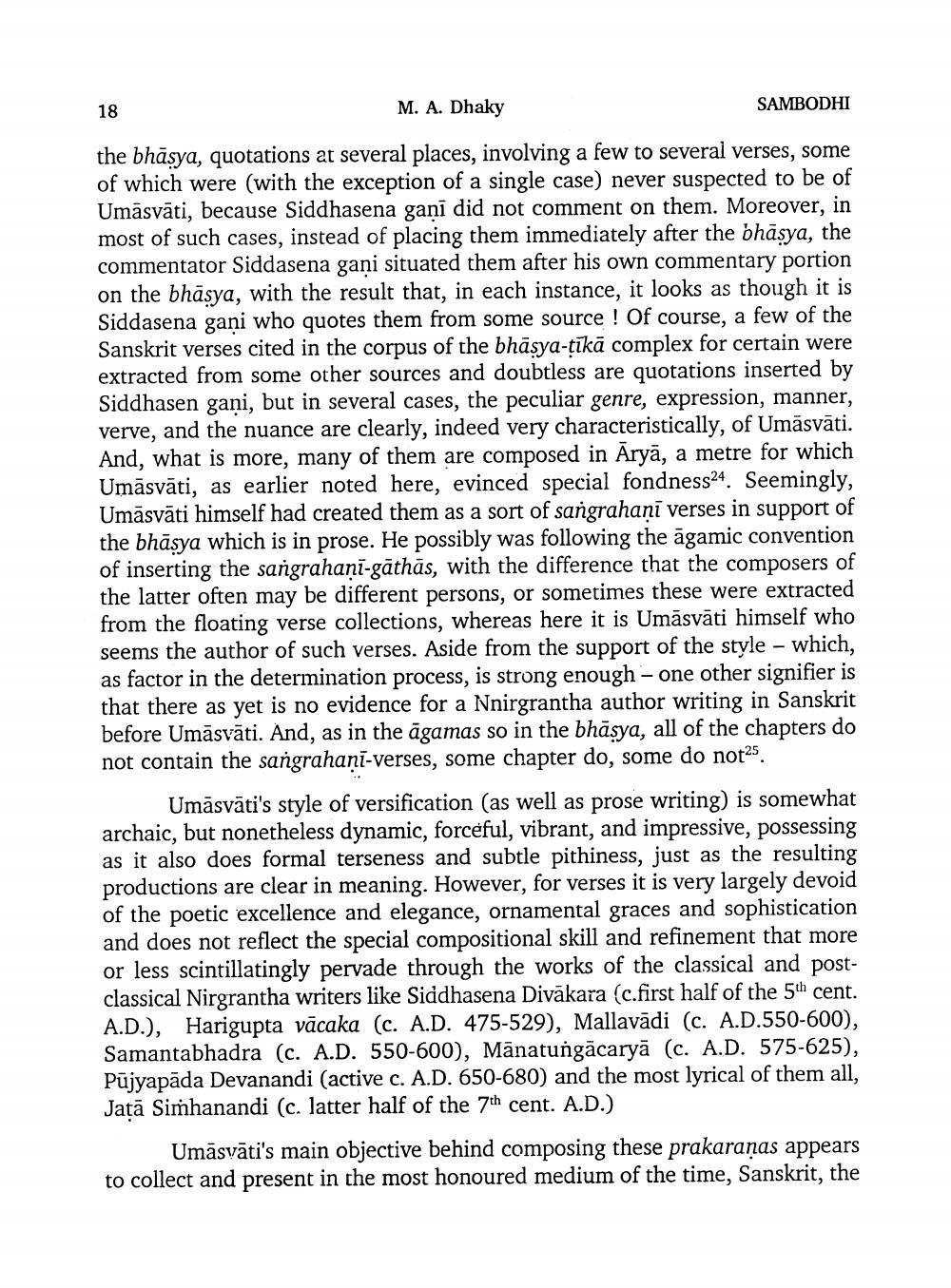________________
18
M. A. Dhaky
SAMBODHI
the bhāsya, quotations at several places, involving a few to several verses, some of which were (with the exception of a single case) never suspected to be of Umāsväti, because Siddhasena gani did not comment on them. Moreover, in most of such cases, instead of placing them immediately after the bhāsya, the commentator Siddasena gani situated them after his own commentary portion on the bhāsya, with the result that, in each instance, it looks as though it is Siddasena gani who quotes them from some source ! Of course, a few of the Sanskrit verses cited in the corpus of the bhāsya-tīkā complex for certain were extracted from some other sources and doubtless are quotations inserted by Siddhasen gani, but in several cases, the peculiar genre, expression, manner, verve, and the nuance are clearly, indeed very characteristically, of Umāsvāti. And, what is more, many of them are composed in Āryā, a metre for which Umāsvāti, as earlier noted here, evinced special fondness24 Seemingly, Umāsvāti himself had created them as a sort of sangrahani verses in support of the bhāsya which is in prose. He possibly was following the āgamic convention of inserting the sangrahani-gāthās, with the difference that the composers of the latter often may be different persons, or sometimes these were extracted from the floating verse collections, whereas here it is Umāsvāti himself who seems the author of such verses. Aside from the support of the style - which, as factor in the determination process, is strong enough - one other signifier is that there as yet is no evidence for a Nnirgrantha author writing in Sanskrit before Umāsvāti. And, as in the āgamas so in the bhāsya, all of the chapters do not contain the sangrahanī-verses, some chapter do, some do not25.
Umāsvāti's style of versification (as well as prose writing) is somewhat archaic, but nonetheless dynamic, forceful, vibrant, and impressive, possessing as it also does formal terseness and subtle pithiness, just as the resulting productions are clear in meaning. However, for verses it is very largely devoid of the poetic excellence and elegance, ornamental graces and sophistication and does not reflect the special compositional skill and refinement that more or less scintillatingly pervade through the works of the classical and postclassical Nirgrantha writers like Siddhasena Divākara (c.first half of the 5th cent. A.D.), Harigupta vācaka (c. A.D. 475-529), Mallavādi (c. A.D.550-600), Samantabhadra (c. A.D. 550-600), Mānatungācaryā (c. A.D. 575-625), Pujyapāda Devanandi (active c. A.D. 650-680) and the most lyrical of them all, Jatā Simhanandi (c. latter half of the 7th cent. A.D.)
Umāsvāti's main objective behind composing these prakaranas appears to collect and present in the most honoured medium of the time, Sanskrit, the




